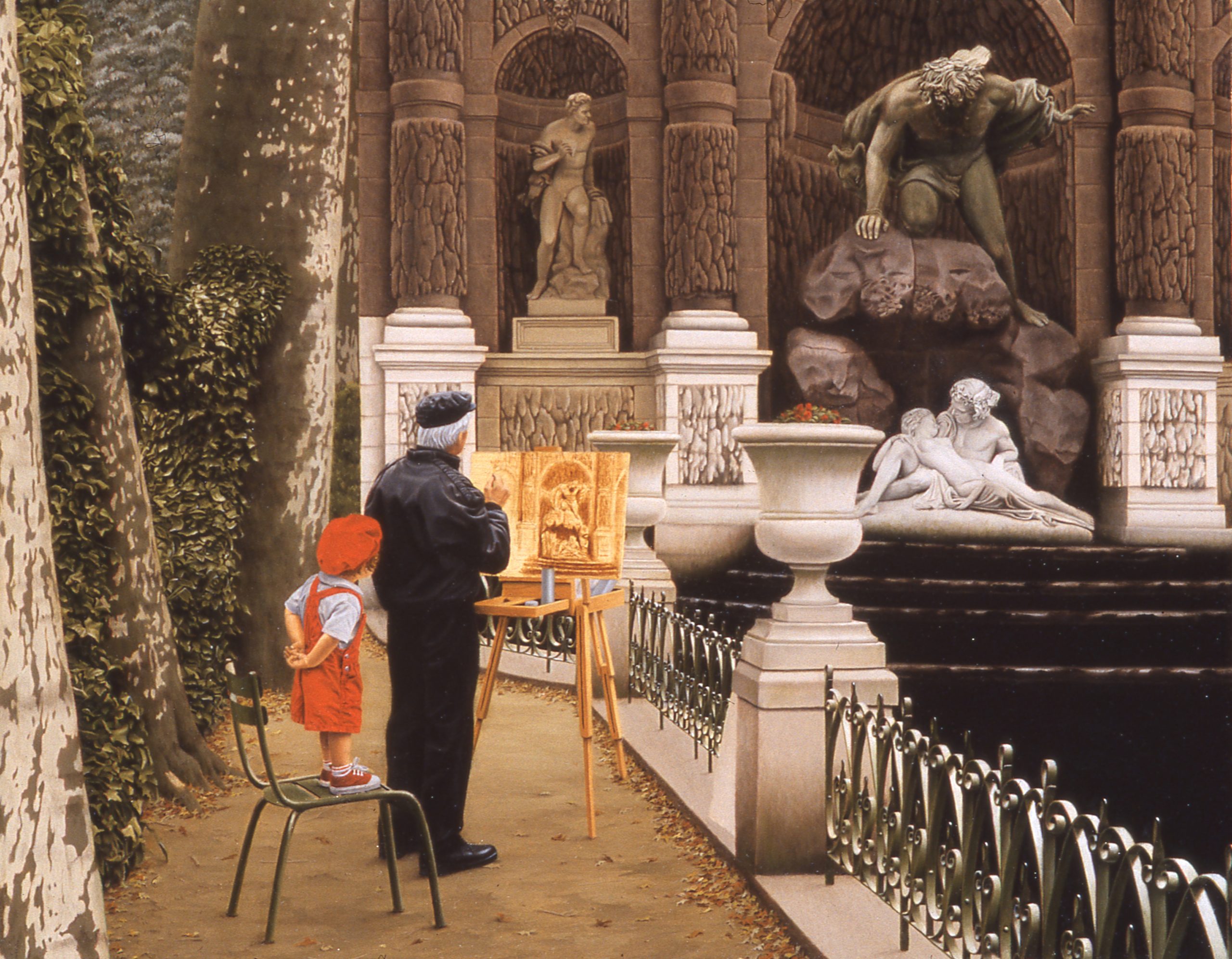
16in x 20in | 40.6cm x 50.8cm
Oil on mahogany board
Collection of Helen of Troy
Hover over the image to zoom in and see the detail or Click to view the full size image in a new tab
For the story behind the painting, scroll down or click here
Available for Purchase
-
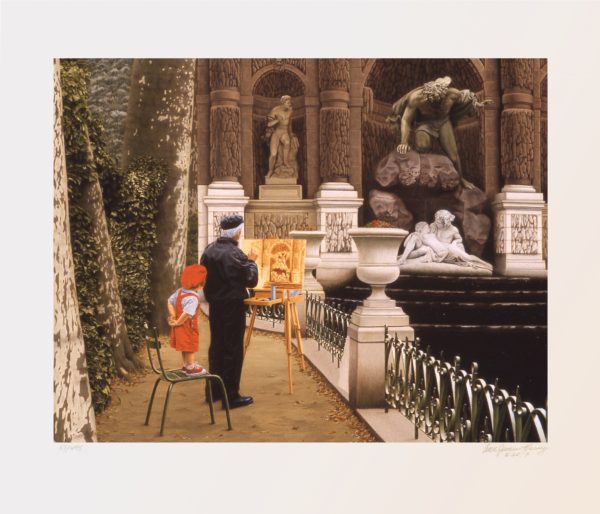
The Connoisseur Signed & Numbered Offset Lithograph
$275.00Add to cartLimited edition of 495 offset lithograph prints, individually signed and numbered by the artist. The image measures 20in x 16in. The print measures 25in x 22in and comes shipped, rolled with acid-free tissue and a Certificate of Authenticity in a sturdy mailing tube. Published by Massey Fine Arts, USA
-
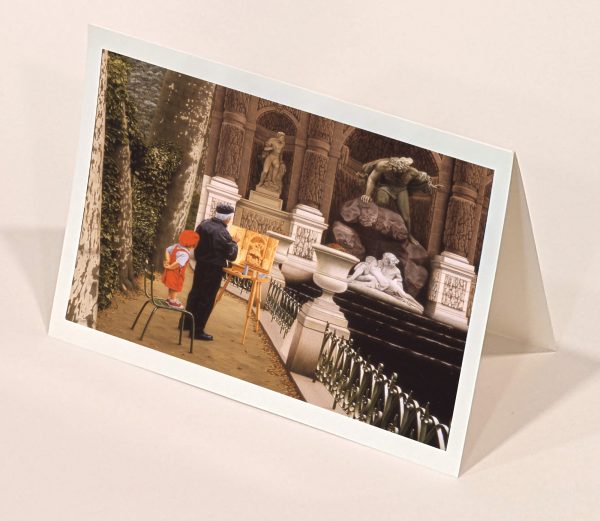
The Connoisseur Note Card
$4.00Add to cartFolded note card. Blank inside, ready for any occasion. Measures 7in x 5in closed and includes an envelope.
-
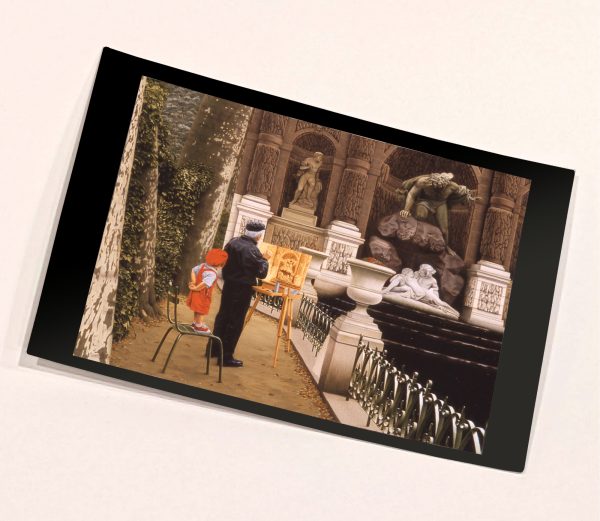
The Connoisseur Post Card
$1.50Add to cartFlat post card. Blank on the back. Measures 6in x 4in.
-
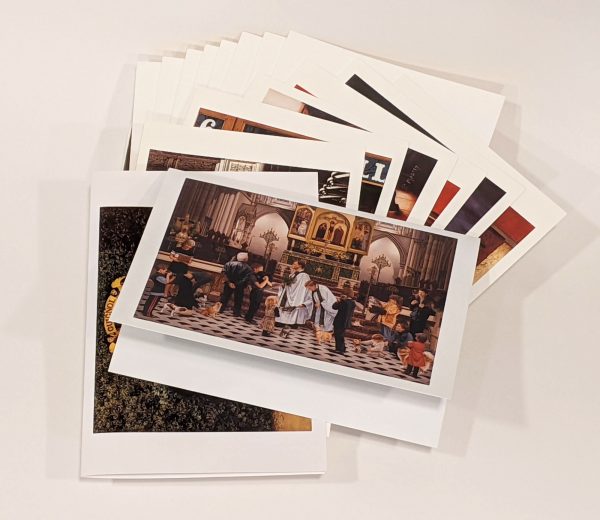
Oil Painting Note Card Set (set of different 8 images)
$20.00Add to cartSet of 8 folded note cards including, “The Blessing of the Animals”, “The Marionette Theatre”, “The Connoisseur”, “La Maison de Poupées”, “Christmas in Paris”, “The Marionette Shop”, “Day’s End”, and “The Fisherman Mending His Net” Blank inside for any occasion. Measures 7in x 5in folded, including 8 envelopes.
Awards
The Barbara Tate Award for an Oil Painting
The Society of Women Artists 140th Annual Exhibition, London, ENGLAND
The Allied Artists Award
American Artists Professional League 73rd Grand National Exhibition, New York, NY USA
The International Award
Sun Bowl Art Exhibit 2000, International Museum of Art, El Paso, TX USA
Runner-up
2019 Artistic Excellence Competition, Southwest Art Magazine, US
Silver Award
Figurative 2021, Camelback Gallery, Online competition
Reproduced in
Books
Desert Modern and Beyond: El Paso Art 1960 – 2012
Magazines
“Ann James Massey” article by Joseph Burgess, El Paso Life Magazine (March/April 2002)
Mensa Bulletin, The Magazine of American Mensa (Apr/May 2002) Cover
InformArt (Spring 02)
“Artistic Excellence” by Kim Agricola, Southwest Art Magazine (Dec 2019/Jan 2020)
Gardens, Art Ascent (July 2021)
Behind the painting
For years, I had in mind to paint or draw the Médici Fountain in my favorite Parisian garden… the Luxembourg Gardens.
With my fascination of juxtaposing past and present between the figures and background, I toyed with numerous ideas as to the casting and interaction of my characters in this legendary setting.
Naturally, the people would have to belong to the garden. Perhaps couples, young or old, echoing in their own manner, the passionate Galatea and Acis in the statuary. I considered readers, chess players, or debating students from the nearby Sorbonne, who would be oblivious to the suspended drama of the jealous cyclops Poyphemus on the cliff looming over the lovers.
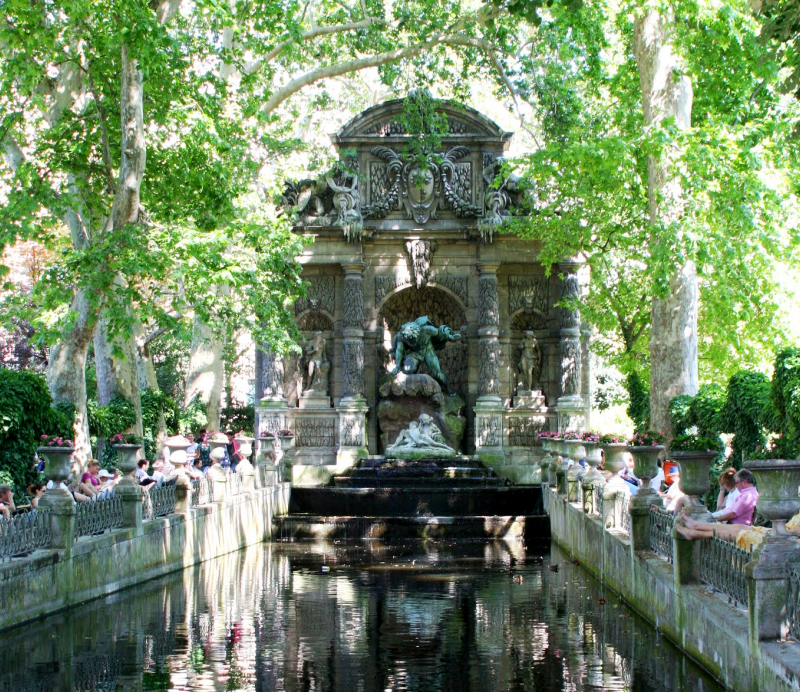
The French Senate is housed in the adjacent Luxembourg Palace. I even thought about portraying two senators enjoying a respite from their duties and regarding the fountain; symbols of today’s democracy and yesterday’s monarchy. It was Marie de Médici’s poignant yearning for her native Tuscany that led her to commission the Italianate grotto fountain in 1624, though the statues of Augustin Ottin weren’t added until 1863.
Children are synonymous with the garden and presented numerous possibilities.

But nothing clicked until I was showing my mom and sister this precious place during their visit in 1996. That day there was an artist painting the fountain. I knew I now had the nucleus of my piece, though this led to a three year search for the perfect artist.
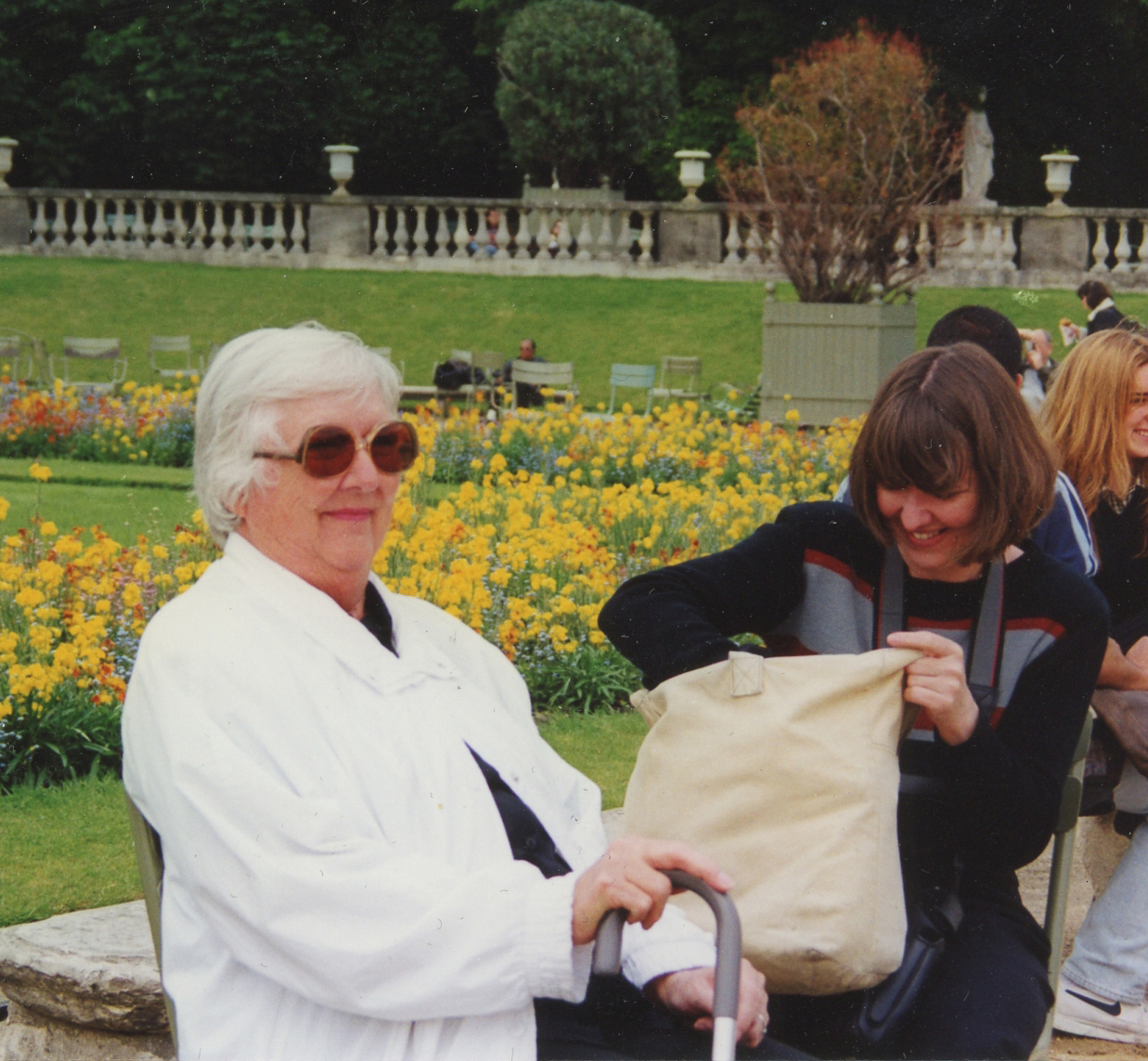
Photo ©1997 Susan Niehans
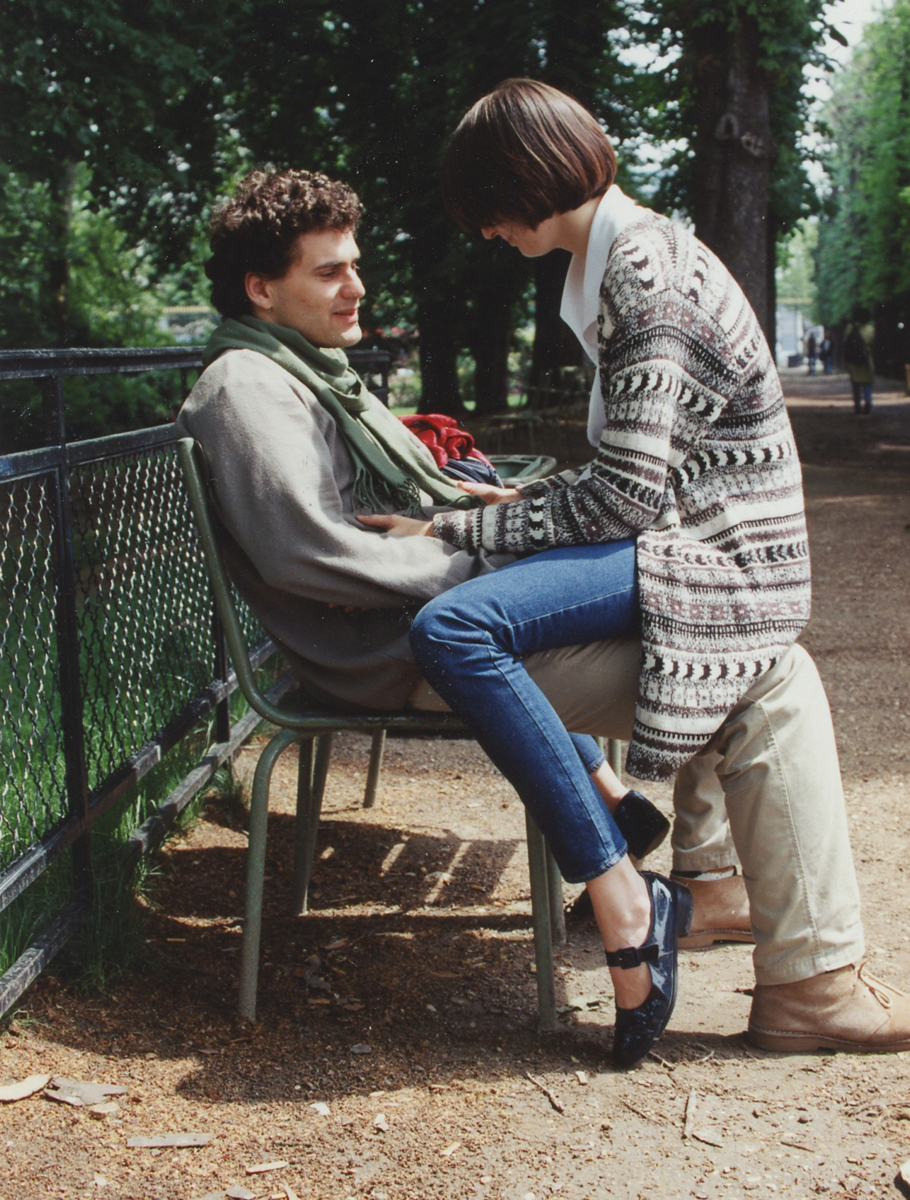
Photo ©2009 Ann James Massey
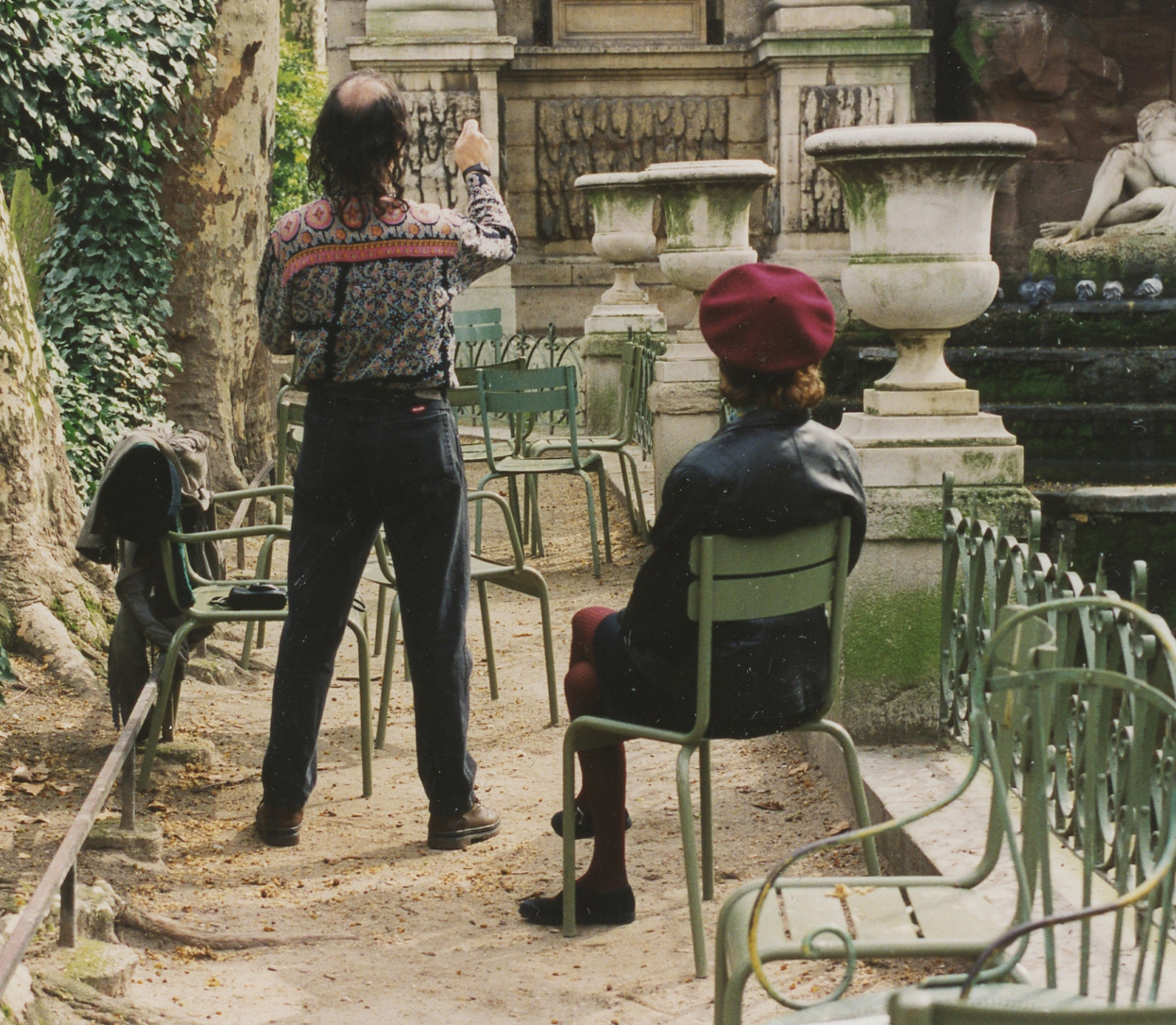
Photo ©1998 Ann James Massey
Almost everyone who modeled for me for other paintings or drawings were enlisted to pose as the artist. Of course, many of my fellow painters were subjected to sessions. I was thrilled when an artist friend, Hal Marcus came to Paris with his fiancé, Patricia Medici, a descendant of the Médicis. What could be more perfect? They each took turns in front of the fountain.
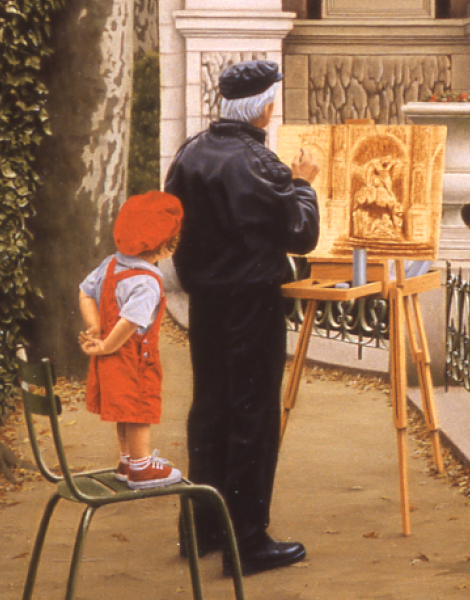
©2000 Ann James Massey
Even strangers were not safe. At the Renaissance Fair in Las Cruces, New Mexico, I asked a woman if she would pose. Looking a little startled, she replied that she lived in Albuquerque. I said that I meant right then and there. Would she pose as if she were painting a picture? She was a marvelous sport, as we drew more than a few puzzled stares while she stood in the middle of the meandering fair crowd, her back to me, one arm raised, and I snapped away like a mad fashion photographer.
Then, in 1999 during the visit of yet another artist, I asked my better half, Henri Bérenger, to join us in the garden and be my umpteenth model.
Why do we look far afield when the answer lies close to home?
The painting on the easel is presented in the same manner as my painting technique. My first layer is a burnt umber rendition of my composition.
It only took me a few more days to decide for the second figure, it must be a child. Many times, I’ve sat drawing in the gardens and turned my head to discover a youngster silently and solemnly contemplating my efforts.
And we must not forget the participants of the fountains.
Polyphemus, who we remember better from his later altercation with Odysseus, had fallen madly in love with the delicate Nereid, Galatea. Though he did his best to woo her, combing his hair with a rake and trimming his beard with a scythe, playing his pipe of a hundred reeds and singing of her charms, she spurned the brutish giant in preference of the handsome Acis. The cyclops in a rage after seeing their embrace hurled part of the mountain at the fleeing lovers, burying Acis. With the intercession of Galatea and the aid of Acis’s own ancestry, Acis split the earth mass and emerged a river god.
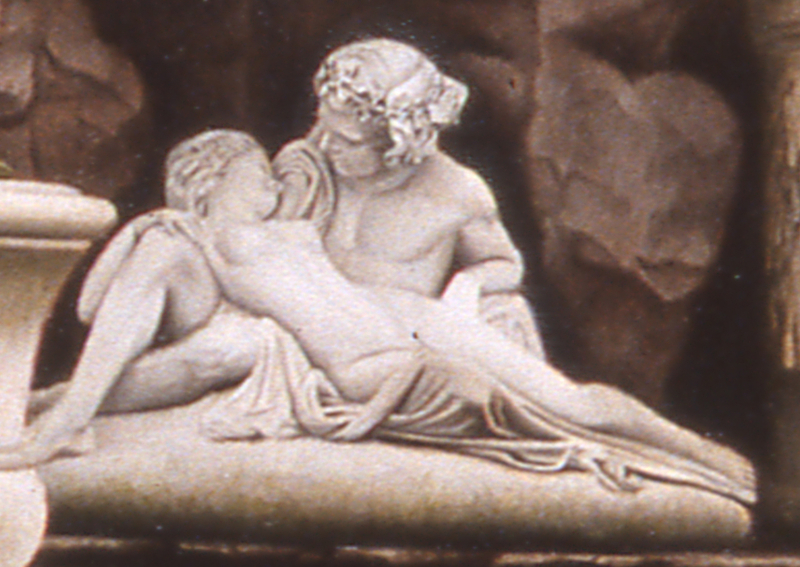
The widow of assassinated Henri IV did not fare quite so well. Marie de Médici served as regent for her young son, Louis XIII from 1610-1614. She only had five years to enjoy the palace and the fountain, designed by Salomon de Brosse and completed in 1625, as she was banished to Compiégne in 1630 by Cardinal Richelieu and her son. In 1631, she fled to Brussels and eventually died destitute at Cologne in 1642.


